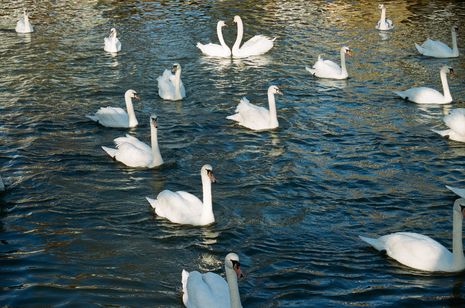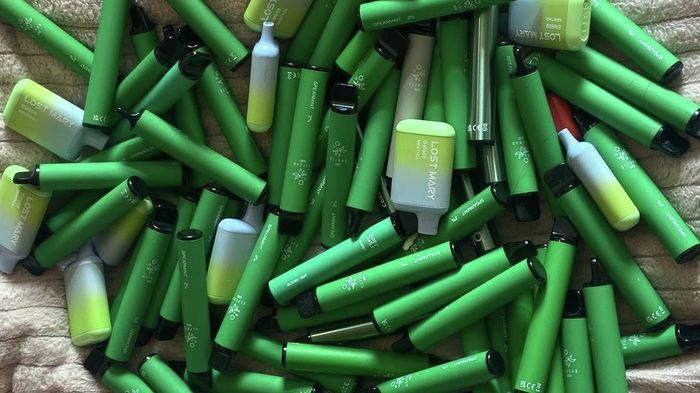Looking for love? So is the entire animal kingdom
Rachel Duke explores the parallels between love in humans and the animal kingdom.

It’s that time of year again. February (scientifically proven to be the worst month of the year) rolls around, the air starts to smell like spring, and the shops start stocking teddy bears and heart-shaped Jellycats. Love it or loathe it, Valentine’s Day is here to stay. But just how much do scientists understand about the biology underlying this feeling the poets call love? Is falling in love a sensation unique to humans, or are there other members of the animal kingdom that can be struck by Cupid’s arrow?
Although the heart has long been the organ of choice for those designing Valentine’s Day cards, the brain is the real love machine. You might recognise love when you feel it, and the arts have understood love for centuries, entertaining us with tales of star-crossed lovers, kindred spirits, and twin flames. In a twist no one saw coming, scientists have a much more practical view of what draws two individuals together and, because of this, defining love is difficult.
“With so many hormones turning your body into a chemical cocktail, it is no wonder love is so all-consuming.”
Love is usually split into three distinct, though not mutually exclusive, categories: lust, attraction, and attachment. Each is associated with a specific hormone profile. Lust is defined by raised testosterone and oestrogen (the ‘sex hormones’) and is thought to be the driving force behind the physical act of sex. Attraction is defined by raised dopamine and noradrenaline, and reduced serotonin. Dopamine is important in the brain’s reward pathways and noradrenaline is known to signal excitement (like adrenaline) explaining the excitement of a crush or the ‘honeymoon period’ of a relationship. However, dopamine signalling is also known to play a role in addiction and, interestingly, reduced serotonin has been linked with obsession - OCD is also thought to be associated with reduced serotonin. Furthermore, arousal has been linked to reduced activity in the prefrontal cortex (involved in critical thinking). Attachment is found in platonic, as well as romantic, relationships and is defined by increased oxytocin and ADH production. Popular science defines oxytocin as the ‘love hormone’ and, while it is not this simple, it is known to be important in building a bond; it is released when mothers breastfeed and when cuddling. With so many hormones turning your body into a chemical cocktail, it is no wonder love is so all-consuming.
“Culture and homophobia have constrained conversations surrounding sexuality in animals.”
How much do we know about love in animals? One only has to watch an episode or two of a David Attenborough documentary before it becomes clear that some animals deeply care for one another. Elephants experience grief, otters hold hands as they sleep so they do not drift apart as they sleep, albatrosses return to the same mate for their entire life, and many pet owners swear their pet loves them back. However, we cannot simply provide an animal with a questionnaire about its feelings towards its partner. We must analyse brain activity or hormonal changes and infer how they feel. Using an MRI machine, scientists have seen that when pair-bonded animals think about their partner, there is increased activity in the amygdala (the brain’s emotional centre). Similarly, oxytocin is increased when dogs cuddle their owners, though the jury is still out to what extent this is ‘cupboard love’ by association. We might expect that many animals experience lust as, from an evolutionary point of view, it is beneficial for animals to want to mate. It also seems plausible to me that some monogamous pair-bonding animals do feel a deeper love for one another. It is evolutionarily advantageous for the pair to stay together to care for their young and love might help with this. But, does it matter if animals fall in love? From a conservation point of view, it matters greatly. Putting two animals of opposite sexes in the same room is no guarantee that they will mate. They must want to do so, and perhaps understanding more about the role of love will aid conservation.
But, of course, the course of true love never did run smooth and evidence suggests that love in the animal kingdom may be as complex and multifaceted as love in our own society. We should be wary of applying human-specific terms to animals but it can be useful for illustrative purposes in this context. Same-sex intercourse, cohabitation, and co-parenting are more common than you might think. Up to 90% of sex between two giraffes is between two males; 10% of rams refuse to mate with ewes but will mate with other rams and the pair-bonding in albatrosses can occur between two females that go on to co-parent a chick. Culture and homophobia have constrained conversations surrounding sexuality in animals. When same-sex behaviour was first identified in penguins it was considered too shocking for the public and, when made available to scientists, was written partly in Greek. While this behaviour may seem confusing on the surface, if we learn that animals can fall in love, this would provide the beginnings of an explanation for same-sex bonds in the animal kingdom.
So, if you’re looking for love this February, take comfort in the fact that the entire animal kingdom is with you on that one. And, if the thought of going to one of the many speed dating events that various societies are hosting across Cambridge sends shivers down your spine, go give your dog a hug; the evidence suggests they might just love you back.
 Interviews / You don’t need to peak at Cambridge, says Robin Harding31 December 2025
Interviews / You don’t need to peak at Cambridge, says Robin Harding31 December 2025 News / Unions protest handling of redundancies at Epidemiology Unit30 December 2025
News / Unions protest handling of redundancies at Epidemiology Unit30 December 2025 Comment / What happened to men at Cambridge?31 December 2025
Comment / What happened to men at Cambridge?31 December 2025 Features / ‘Treated like we’re incompetent’: ents officers on college micromanagement30 December 2025
Features / ‘Treated like we’re incompetent’: ents officers on college micromanagement30 December 2025 Theatre / We should be filming ADC productions31 December 2025
Theatre / We should be filming ADC productions31 December 2025








